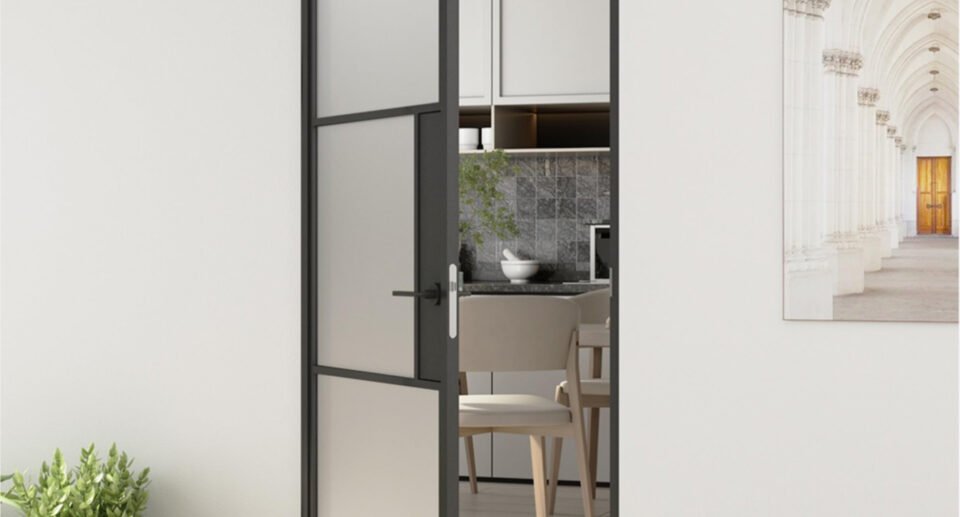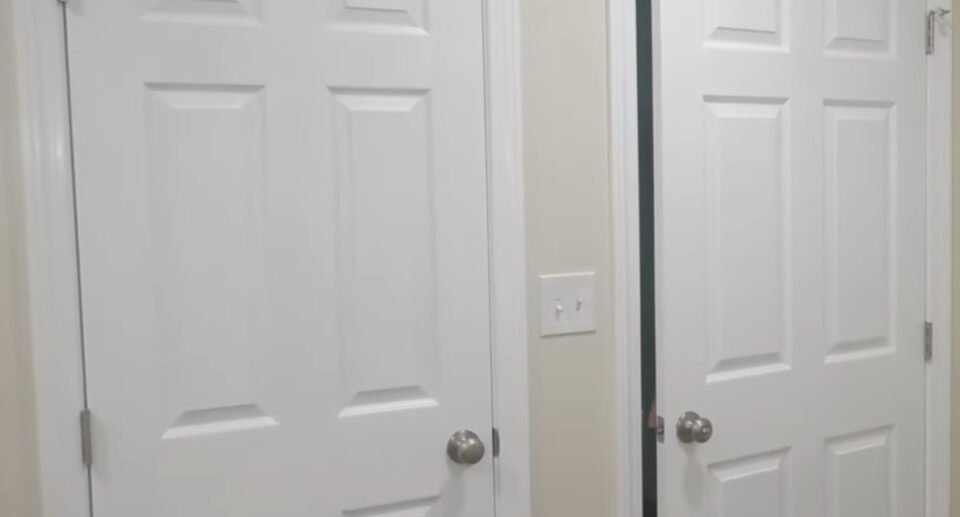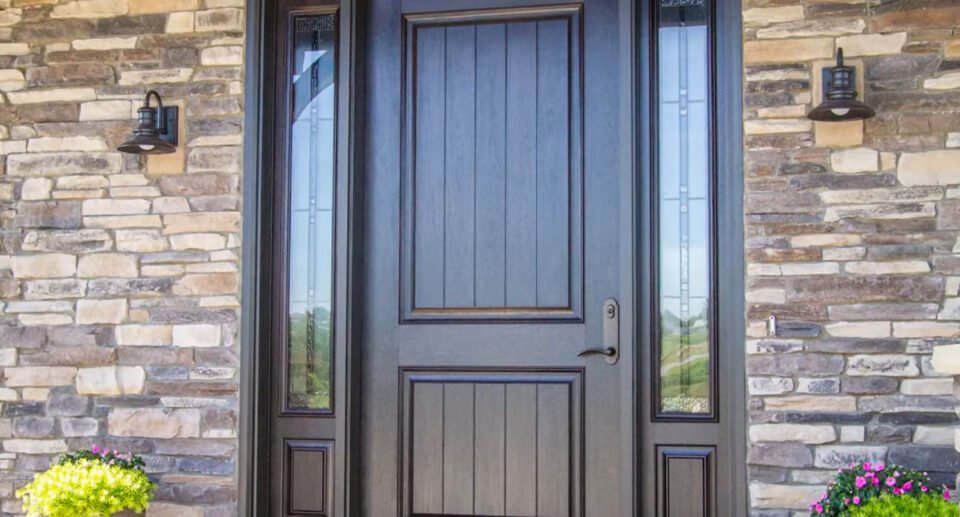The Ultimate Guide To What is a Prehung Door – Everything You Need To Know

A prehung door is a complete door unit that comes with the door slab, hinges, and frame, ready to install.
Prehung doors are available in a wide range of sizes and styles door, making them a popular choice for both interior and exterior doors.
They are a great option for those who want to replace a damaged door, update their home’s look, or install a new door.
The installation process for a prehung door is relatively straightforward and can be done by a skilled DIYer or a professional.
The first step is to measure the rough opening to ensure that the prehung door will fit correctly.
Once the rough opening is measured, the old door and frame are removed, and the new prehung door unit is placed into the opening.
The door is then leveled, and shims are used to secure the frame in place.
Finally, the door is attached to the frame, and the hardware is installed.
Whether you’re looking to update the look of your home or replace a damaged door, a prehung door can be a great option.
With a wide range of sizes and styles available, prehung doors are a popular choice for both interior and exterior doors.
The installation process is straightforward, and with a little bit of skill, you can install a prehung door yourself.
Understanding Prehung Doors
Prehung doors are a popular choice for homeowners who want to replace an old or damaged door.
They come with the door already attached to the frame, which makes installation easier and faster.
In this section, we will discuss the components of a prehung door and the differences between prehung and slab doors.
Components of a Prehung Door
A prehung door consists of three main components: the door, the frame, and the hinges.
The door is usually made of wood, but can also be made of other materials like fiberglass or steel.
The frame, also known as the jamb, is made of wood and is designed to fit into the opening of the wall.
The hinges are attached to the frame and allow the door to swing open and closed.
Prehung vs. Slab Doors
One of the main differences between prehung and slab doors is the installation process.
A slab door is simply the door itself, without the frame or hinges. It is installed by attaching it to an existing door frame or by building a frame for it.
Prehung doors, on the other hand, come with the door already attached to the frame and hinges.
This makes installation faster and easier, but also means that prehung doors are heavier and more difficult to move than slab doors.
Another difference between prehung and slab doors is the cost.
Slab doors are generally less expensive than prehung doors because they do not come with the frame or hinges.
However, installing a slab door can be more difficult and time-consuming than installing a prehung door, especially if a new frame needs to be built.
Installation Process
Installing a prehung door can be a relatively simple process, especially if the installer has some basic carpentry skills.
The following steps outline the process for installing a prehung interior door.
Measuring and Preparing the Doorway
Before installing a prehung door, it is important to measure the doorway to ensure that the door will fit properly.
The installer should measure the width and height of the doorway, as well as the depth of the jamb.
It is also important to check the squareness of the doorway to ensure that the door will hang properly.
Once the measurements have been taken, the installer should prepare the doorway for the new door.
This may involve removing the old door and hardware, as well as any trim or molding around the doorway.
The installer should also clean the doorway and make any necessary repairs to the frame or jamb.
Steps for Installing a Prehung Door
The following steps outline the process for installing a prehung door:
- Place the door into the doorway, making sure that the hinges are on the correct side and that the door swings in the desired direction.
- Use shims to level the door and ensure that it is plumb. The shims should be placed at the top and bottom of the jamb, as well as at the midpoint.
- Once the door is level, use screws to secure the hinges to the jamb.
- Check the door for proper operation, making sure that it opens and closes smoothly and that the latch engages properly.
- Install the trim around the doorway, using finish nails to secure it to the jamb and wall.
Finishing Touches
Once the door has been installed and the trim has been added, the installer may choose to paint or stain the door to match the surrounding decor.
It is important to allow the door to dry completely before adding any hardware or using the door.
The installer should also make any necessary adjustments to the door, such as adding additional shims or adjusting the latch, to ensure that it operates properly.
Customization and Considerations
Choosing the Right Size and Style
When it comes to prehung doors, choosing the right size and style is crucial.
Prehung doors come in standard sizes, but homeowners can also have custom doors made to fit their exact needs. It’s important to measure the opening where the door will be installed to ensure the right fit.
Additionally, homeowners should consider the style of the door to match their home’s aesthetic.
Prehung doors come in a variety of styles, including traditional, modern, and rustic. It’s important to choose a style that complements the overall design of the home.
Customization Options
One of the advantages of prehung doors is the ability to customize them to fit personal preferences.
Homeowners can choose from a variety of materials, including wood, fiberglass, and steel. Each material has its own benefits and drawbacks, so it’s important to weigh the options carefully.
In addition to materials, homeowners can also choose the color and finish of the door.
This allows for a personalized touch and can add to the overall aesthetic of the home.
Maintenance and Replacement
Identifying Common Issues
Prehung doors are designed to last for years with minimal maintenance. However, like any other door, they may develop problems over time.
Some of the most common issues include warping, damaged hinges, and weatherstripping that has worn out.
Warping is a common problem for vintage doors, and it can lead to gaps around the edges of the door. This can cause drafts and make it harder to keep your home comfortable. If you notice that your door is warped, it may be time to replace it.
Another common issue is damaged hinges.
If the hinges are damaged, the door may not close properly or may sag on one side. This can be a safety hazard, as it can make it easier for intruders to enter your home. If you notice that your hinges are damaged, they should be replaced as soon as possible.
Finally, weatherstripping that has worn out can lead to drafts and higher energy bills. If you notice that your door is letting in drafts, it may be time to replace the weatherstripping.
Replacing an Existing Door
If you need to replace an existing door, you have two options: retrofitting or replacing the entire door.
Retrofitting involves replacing the door slab but keeping the existing frame and hinges. This is a good option if the frame and hinges are still in good condition.
If the frame and hinges are damaged or outdated, it may be better to replace the entire door.
This will give you a new frame, hinges, and weatherstripping, which can help improve the energy efficiency of your home.
Conclusion
Prehung doors are a popular choice for homeowners who want a quick and easy installation process. They come with the door and hinges already installed in a frame, making it a complete package.
Prehung doors provide many advantages over slab doors. These include ease of installation, improved insulation and energy efficiency, better security, and environmental benefits.
When choosing a prehung door, it’s essential to ensure that it’s set up correctly to avoid any future problems. Prehung doors are available in a wide range of sizes and materials, making it easy to find the perfect fit for your home.
While prehung doors may require a higher initial investment, they can save money over time and provide long-term benefits. It’s essential to consider the type of door and the location of the installation before making a final decision.
Prehung doors are a great choice for homeowners who want a hassle-free installation process, energy efficiency, and improved security. With the right installation and maintenance, prehung doors can last for many years, making them a valuable investment for any home.

Hello, I’m Keith Jones. I’m the author and head of content here of door and window guide. I’ve been in the window and door industry for over 10 years in the UK and North America. I’ve had quite a few roles during my career mainly in Worldwide sales. I’m now semi retired so I thought I’d put my knowledge to good use educating people about all they might need to know about door and window related topics.






